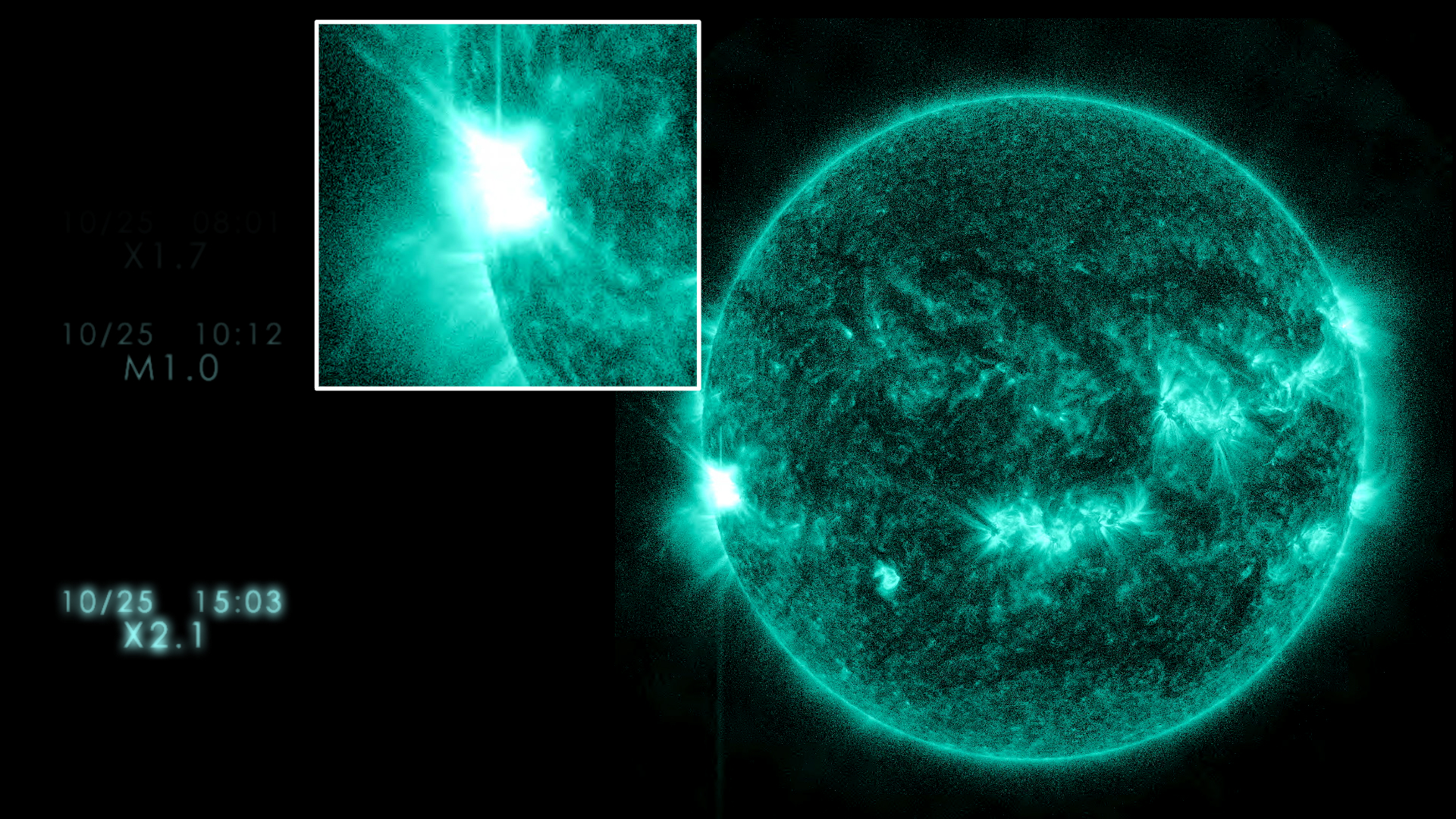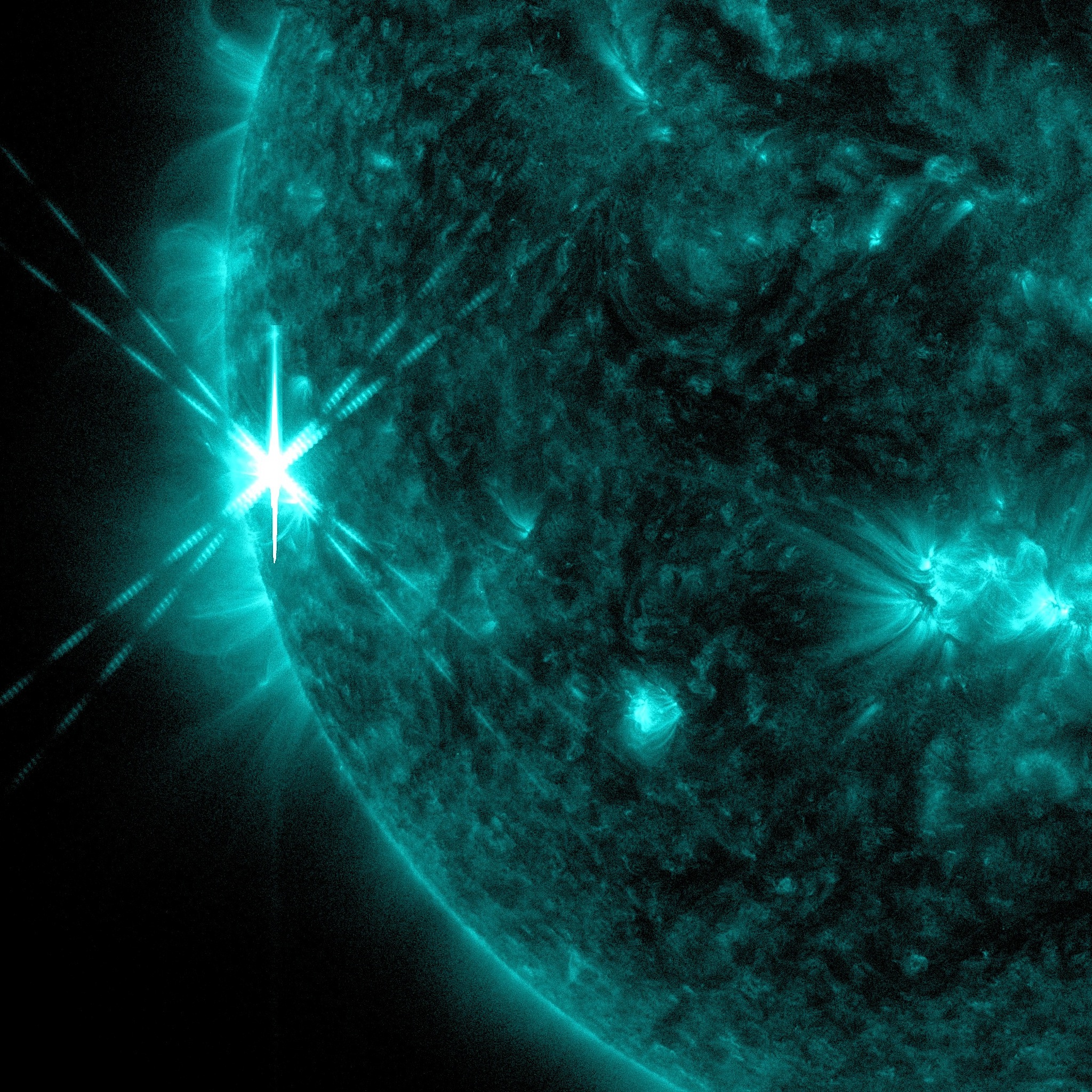Sun Continues to Emit Solar Flares
After emitting its first significant solar flares since June 2013 earlier in the week, the sun continued to produce mid-level and significant solar flares on Oct. 27 and Oct. 28, 2013.
Then, on Nov. 5, 2013, The sun emitted a significant solar flare, peaking at 5:12 p.m. EST. This flare was classified as an X3.3 flare.
Solar flares are powerful bursts of radiation. Harmful radiation from a flare cannot pass through Earth's atmosphere to physically affect humans on the ground, however — when intense enough — they can disturb the atmosphere in the layer where GPS and communications signals travel.
One of the larger flares was classified as an X1.0 flare, which peaked at 10:03 p.m. EDT on Oct. 27. "X-class" denotes the most intense flares, while the number provides more information about its strength. An X2 is twice as intense as an X1, an X3 is three times as intense, etc. In the past, X-class flares of this intensity have caused degradation or blackouts of radio communications for about an hour.
Another large flare was classified as an M5.1 flare, which peaked at 12: 41 a.m. EDT on Oct. 28. Between Oct. 23, and the morning of Oct 28, there were three X-class flares and more than 15 additional M-class flares.
Increased numbers of flares are quite common at the moment, since the sun is headed toward solar maximum conditions as part of its normal 11-year activity cycle. Humans have tracked this solar cycle continuously since it was discovered in 1843, and it is normal for there to be many flares a day during the sun's peak activity.
The recent solar flare activity has also been accompanied by several coronal mass ejections or CMEs, another solar phenomenon that can send billions of tons of particles into space that can reach Earth one to three days later. These particles cannot travel through the atmosphere to harm humans on Earth, but they can affect electronic systems in satellites and on the ground.

X3.3 flare from 22:15 UT on Nov 5, 2013. This image is a blend of SDO AIA 193 and 131 angstrom wavelengths.

X2.3 flare from 22:00 UT October 29. Blended SDO AIA 304 and 193 wavelengths.

X2.3 flare from 22:00 UT October 29. Blended SDO AIA 304 and 193 wavelengths. Cropped.

X2.3 flare from 22:00 UT October 29. Blended SDO AIA 131 and 171 wavelengths.

X2.3 flare from 22:00 UT October 29. Blended SDO AIA 171 and 131 wavelengths. Cropped.

X2.3 flare from 22:00 UT October 29. Shown in 4 different SDO AIA wavelengths.

X2.3 flare from 22:00 UT October 29. Blended SDO AIA 131 and 193 wavelengths.

X2.3 flare from 22:00 UT October 29. SDO AIA 131.

X2.3 flare from 22:00 UT October 29. SDO AIA 193.

X2.3 flare from 22:00 UT October 29. SDO AIA 304

X1.0 solar flare from 10/28/13 at 02:03 UT in 131.

X1.0 solar flare from 10/28/13 at 02:03 UT in 131. Closeup.

M5.1 solar flare from 10/28/13 at 04:41 UT in 131.

M5.1 solar flare from 10/28/13 at 04:41 UT in 131. Closeup.
For More Information
Credits
Please give credit for this item to:
NASA's Goddard Space Flight Center/SDO
-
Producer
- Scott Wiessinger (USRA)
-
Writer
- Karen Fox (ADNET Systems, Inc.)
Release date
This page was originally published on Monday, October 28, 2013.
This page was last updated on Wednesday, May 3, 2023 at 1:51 PM EDT.
Missions
This visualization is related to the following missions:Series
This visualization can be found in the following series:Tapes
This visualization originally appeared on the following tapes:-
2013 Heliophysics Breaking News
(ID: 2013021)
Tuesday, December 31, 2013 at 5:00AM
Produced by - Robert Crippen (NASA)

